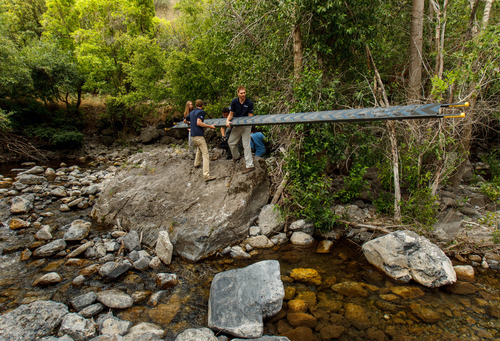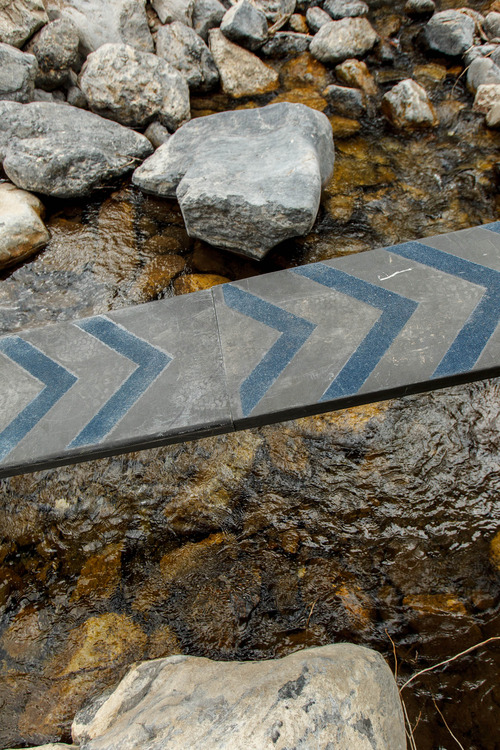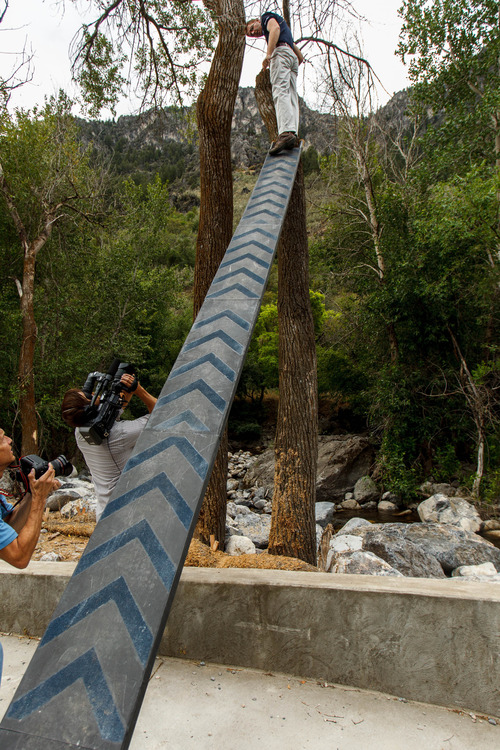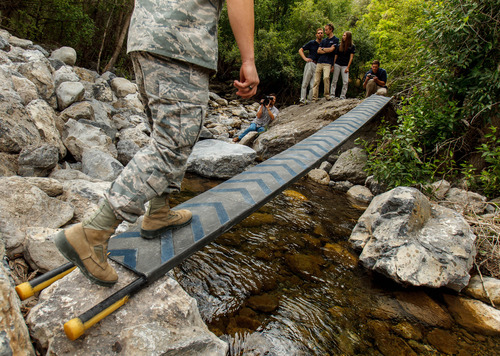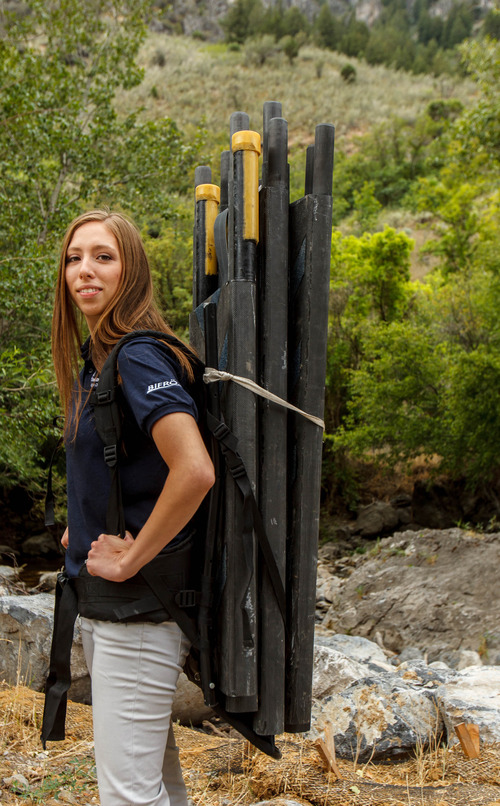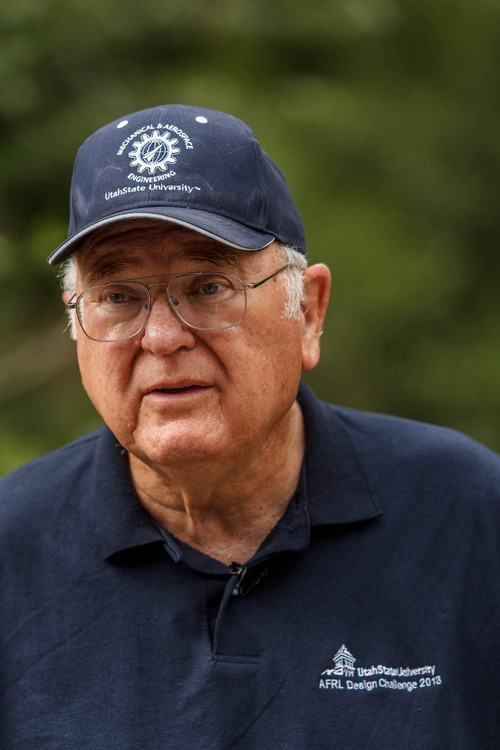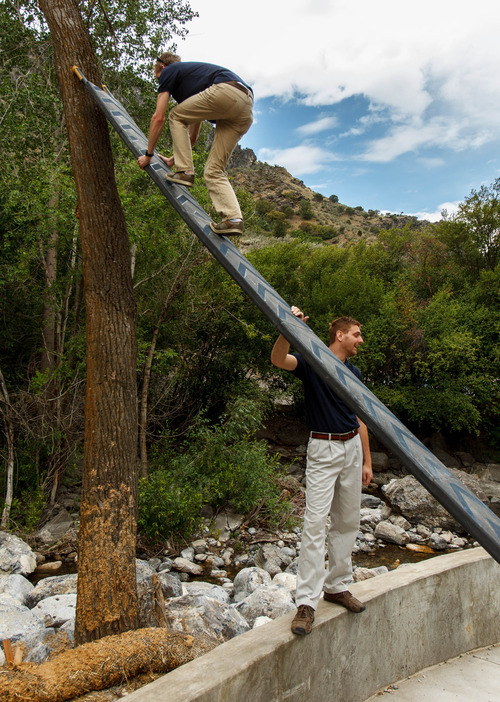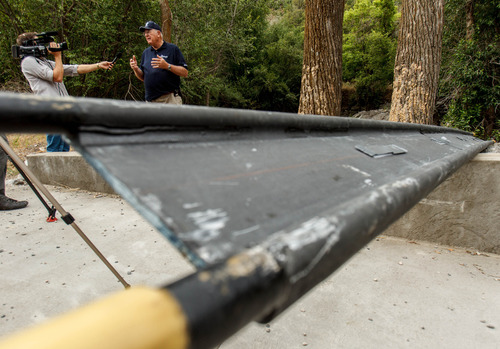This is an archived article that was published on sltrib.com in 2013, and information in the article may be outdated. It is provided only for personal research purposes and may not be reprinted.
Logan • Dennis O'Hara has a favorite maxim that he shares with students at Utah State University.
"Engineering," he says, "is 50 percent personality and 50 percent physics."
It's not a message that goes over well with some science-minded acolytes.
But a team of seven USU students who just won an Air Force contest now know what O'Hara, a 40-year veteran of corporate America, means.
It required an abundance of people skills for the students to work together over two semesters to design and build a device to meet the Air Force Research Laboratory's Design Challenge. It was the students' senior capstone project.
The Air Force asked teams from 16 universities and three military academies to design a lightweight, portable device that war fighters can use to scale a compound wall, cross a 20-foot wide canal, or bridge a crevasse.
"We all had good ideas at the beginning. That was a challenge," said Taylor Clawson, who graduated this spring and now works for Northrop Grumman at Hill Air Force Base.
Clawson and two other team members, Tasha Davis and Benjamin Scott, on Tuesday demonstrated their invention, known by the somewhat deceiving acronym "BAMBI."
The Break-Apart Mobile Bridging and Infiltration device is essentially a lightweight, incredibly strong ladder that can be dismantled into six pieces and carried in a backpack.
The students designed it with carbon fiber tubes at the sides and two layers of woven carbon fiber over a dense foam core. It weighs just 27 pounds and extends to 22 feet. It looks like a cross between a ladder and an ambulatory stretcher.
"It's really kind of an exciting project," said Byard Wood, a professor of mechanical and aerospace engineering and one of the team's faculty advisers, along with O'Hara. "It's high-tech and simple."
The teams competed in April at Eglin Air Force Base in Florida, using their devices to get through a course of obstacles and gaps. The USU team — assembling and dissembling BAMBI — finished the course in six minutes, half the time of the next-best team, Wood said.
The Air Force kept BAMBI for a while, so the public demonstration wasn't scheduled until Tuesday. "The more they used it, the more they liked it," Wood said.
Other teams used inflatables and telescoping devices, but none was as light.
Davis, who will graduate in December, said the team considered using an inflatable bridge, but rejected the idea early on.
"This is for the Air Force, so they're in combat. They have to be in a hurry and an inflatable, you have to blow up and you need lots of compressed air."
Instead, "we wanted something very simple and lightweight," she said. "The more simple we made it, the lighter it became."
The USU College of Engineering will now compete for a $100,000 grant to further develop the team's idea for the Air Force.
Last year, another team of seniors won the same competition by designing a way to climb a 90-foot wall without hooks and ropes. It entailed suction cups.
The engineering college received $100,000 to continue perfecting that invention, Wood said.
In August, a new team will get the final challenge in the three-year program sponsored by the Air Force, Wood said.
Twitter: @KristenMoulton



